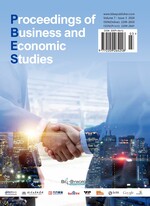Abstract
By examining the current status of tourism and transport research both domestically and internationally, and analyzing the development trends of Chongqing’s tourism and transport industry, this study evaluates the weight indices and performs a coupling and coordination analysis of various indicators of Chongqing’s tourism and transport industry from 2011 to 2019. The following conclusions are drawn: (1) The value of the comprehensive evaluation function for tourism is higher than that of the transport industry, indicating that Chongqing’s tourism industry is in a period of vigorous development; (2) The degree of coupling coordination development between Chongqing’s tourism and transportation industries from 2011 to 2019 is rising. As the coupling coordination stage continues to improve, the level of coupling coordination also improves, with the overall trend showing a progression from mild dysfunction to primary coordination. Based on these conclusions, corresponding countermeasures are proposed to promote the coupling coordination between tourism and transport in Chongqing, and suggestions are made for the overall improvement of the transport industry and the sustainable development of the tourism industry.
References
Yu X, Zhang Y, He Y, 1988, The Current Situation, Problems, and Countermeasures of Tourism Transportation in China. Tourism Tribune, 1988(3): 25–29 + 39.
Zhang L, 1989, Adjustment, Coordination, and Development: Thoughts and Countermeasures for the Coordinated Development of Tourism and Civil Aviation — Notes from the China Tourism Transportation Symposium. Tourism Tribune, 1989(1): 37–38 + 42.
Lin H, 1989, Three Reflections on China's Tourism Transportation. Tourism Tribune, 1989(2): 12–16.
Wang Z, On Several Characteristics and Development Directions of China’s Tourism Transportation. Tourism Tribune, 1989(3): 31–36.
Yang J, 2009, Comprehensive Evaluation of Spatial Differences in the Development of China’s Tourism Industry. Geographical Science, 29(4): 613–618.
Li Y, 2010, Opportunities, Challenges, and Countermeasures for the Development of Enshi Prefecture’s Tourism Industry after the Opening of the “Two Roads”. Hubei Social Sciences, 2010(11): 79–81.
Li W, 2012, The Empirical Research on the Transporation Construction Promoting the Development of Tourism in Southern Shaanxi. Journal of Northwest University (Natural Science Edition), 42(1): 109–114.
Xu L, 2014, The Impact of Tourism Transportation on the Development of Coastal City Tourism in Shandong. Tourism Overview, 2014(22): 208–209.
Zhang G, Yuan H, 2022, An Analysis of Coupling Coordination and Its Influencing Factors from Transportation Networks and Tourism Industry of Shandong Province. Journal of China University of Petroleum (Edition of Social Sciences), 38(5): 47–54.
Gong S, 2022, Research on the Spatial Distribution of Tourist Attractions in Shandong Province and Their Coordinated Development with Transportation. Technology and Market, 29(10): 163–165.
Wang Z, Huang D, 2023, Coupling Coordination and Influencing Factor Analysis of Tourism Economy-Transportation-Urbanization in Urban Agglomeration around Changsha–Zhuzhou–Xiangtan. Journal of Hunan Normal University, 46(1): 100–108.
Marina, Gan X, 2021, Spatio-Temporal Evolution Analysis of the Coupling Coordination Degree of the Western Tourism-Economic-Transportation System. Economic Affairs, 2021(1): 53–61.
Wu H, Liu D, 2019, Research on the Coupling Coordination Degree between Transportation and Tourism Development in China. Statistics and Decision, 35(17): 143–146.
